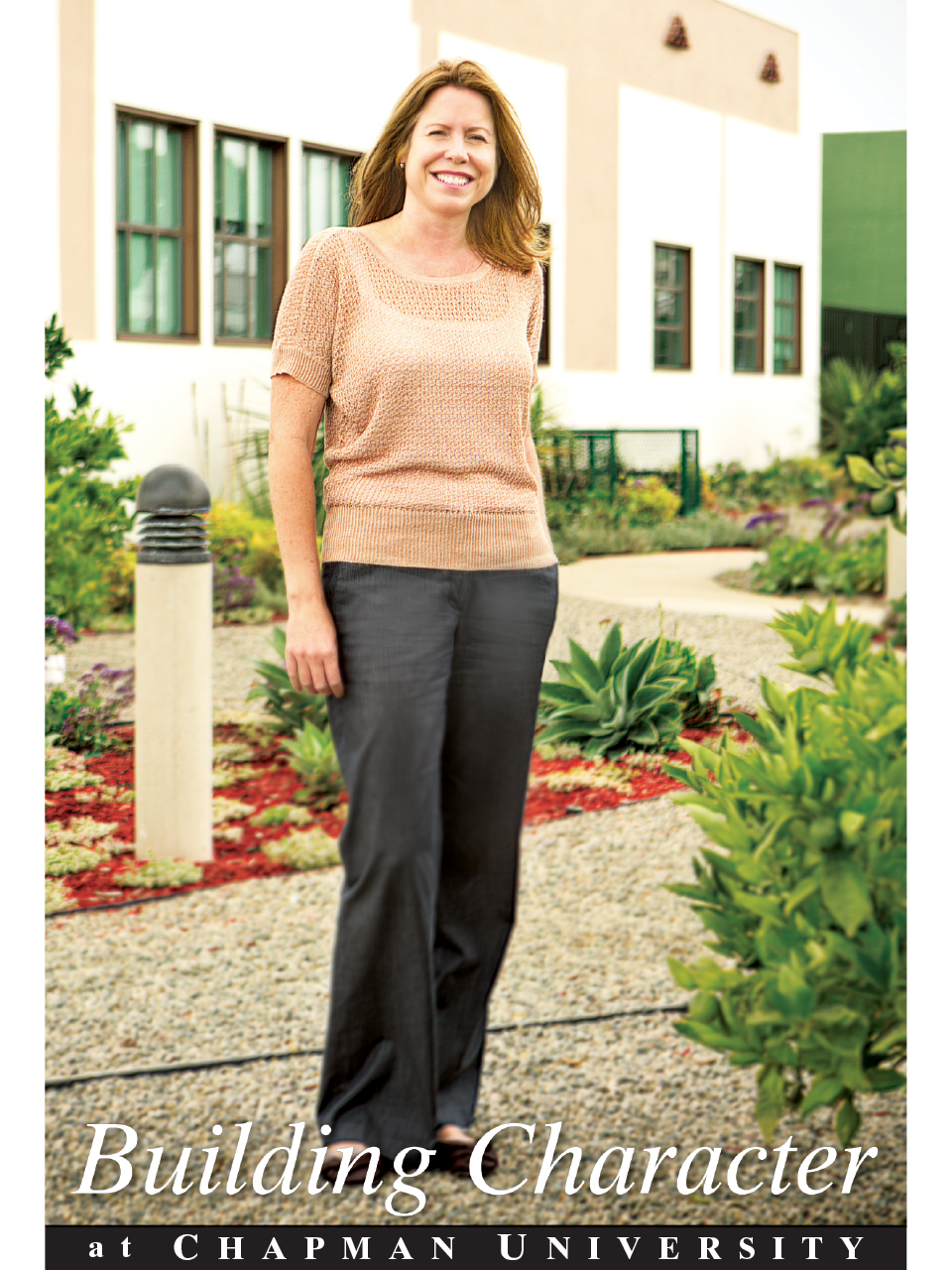
Laura Glynn, PhD
While completing a double major in psychology and economics in the early 1990s at the University of California, Davis, Laura Glynn, Ph.D. was unsure which field to pursue for graduate school—until she took a developmental psychology class.
“I can still picture the professor lecturing about children and their development over time,” says Glynn, an associate professor at Chapman University and head of faculty in Psychology in the Schmid College of Science and Technology. “I was in awe of the material and the teacher and knew I was hooked.”
The instructor who inspired Glynn was Dr. Linda Acredolo, who researched infant language development, including symbolic gestures known as baby signs. “I worked in her lab for a year, and that experience greatly influenced my development as a researcher,” says Glynn.
Maternal Programming Research
Over the last 15 years, Glynn’s groundbreaking research, which she refers to as “maternal programming,” has focused on the interplay between biology and psychology during the pregnancy and postpartum period.
“The introduction of hormones during pregnancy leads to profound physiological and psychological changes,” says Glynn. “For instance, women become progressively less responsive to stress during pregnancy, which serves a protective function. However, women who don’t show the expected decline in stress response are at risk for preterm birth.”
Hormones and Postpartum Depression
Glynn also looks at hormones and their effects on postpartum depression. “Prenatal hormones play a big role in priming the maternal brain for the challenges of motherhood,” says Glynn, whose recent findings show that elevated levels of the placental corticotropin-releasing hormone (pCRH) may put woman at a greater risk for postpartum depression.
To the relief of women who have been pregnant and become forgetful, Glynn has found that pregnancy hormones have an effect on memory. “Longitudinal studies comparing pregnant and non-pregnant women found minor decrements for pregnant women in specific types of memory, including verbal recall. The research shows these decrements persist into the postpartum period and increase with each pregnancy.”
Prenatal Experience and Childhood Development
Glynn also focuses on how the prenatal experience shapes fetal, infant and child development. She recruits and follows large cohorts of mothers and children from 15 weeks of gestation onward. Over the past 10 years, she and her collaborators have followed a cohort into preadolescence and recently received a grant from the National Institutes of Health to start another cohort
Her mother/child work examines factors such as how the stress hormone cortisol predicts fetus and infant development. One study found that breastfeeding mothers who exhibited high levels of cortisol in their milk had more fearful infants.
Given the nature of her research, Glynn, who is married and has two children, is careful about how she presents her findings. “People like the idea of pregnant women becoming immune to stress, but some are alarmed about the loss of memory and the effects of cortisol on infants. Memory decrements are small from a clinical or functional standpoint, and regarding the association between milk cortisol and infant temperment, in some environments, like a stressful home situation, it’s adaptive for a child to be reserved.” One of Glynn’s favorite aspects of her research is the opportunity to collaborate with individuals from a wide variety of disciplines, including neuroscience, clinical psychology, medicine and biochemistry.
Curt Sandman has collaborated with Glynn since 1998 when she joined him as a Post-Doctoral Fellow after graduating with a master’s and doctorate from the University of Calif., San Diego. Sandman is Professor Emeritus, Psychiatry & Human Behavior, University of Calif., Irvine College of Medicine.
“Laura’s background and training from UCSD in psychosocial stress fit perfectly with our more biologically-based approach at UCI,” says Sandman. “Our research team has been very productive, and Laura is the longest tenured member (besides me). Diligent about her research and possessing a strong quantitative mind, she has carved a unique niche in an area where most of the work is conducted on animals. Laura stands among very few who have examined the consequences of human pregnancy on the human brain.”
Early Human and Lifespan Development Research Facility
After working at UCI for 10 years, Glynn joined Chapman’s faculty in fall 2008. The university provided a permanent home for the research cohort by restoring the Cypress Street School, which now houses the Early Human and Lifespan Development Research Facility.
“Chapman worked with me to configure the space for research, including state-of-the-art observation rooms with remote control video cameras so we can videotape mother-child interactions,” she says. “There are interview rooms, play areas for siblings and a phlebotomy room where we collect blood from pregnant women to assess hormone levels.”
In addition to research, Glynn teaches undergraduate courses in psychology and supervises undergraduate research, balancing those activities with administrative duties, which are many. The psychology department has more than 300 majors and 300 minors.
Christine Brown is a former student of Glynn’s, who is heading to graduate school. “Dr. Glynn is a great instructor,” says Brown. “Initially, I was afraid of asking too many questions, because I thought she might think less of me, but I soon realized she takes every question seriously.”
When she teaches, Glynn often remembers that pivotal classroom experience years ago. “I know I don’t reach every student,” she says, “but if I can reach even a couple of students in a profound way, it can make a difference.”
Cypress Street School
Home today to the Chapman University Early Human and Lifespan Development Research Facility, the restored 1928 Cypress Street School in Old Towne is the last-standing Mexican-American segregated schoolhouse in Southern California. For many years it was the administrative offices for the Villa Park Orchards Association’s packing house operations. In addition to housing the research facility, the building features framed photos of students and teachers at the old school and is headquarters for the Orange Barrio Historical Society.



